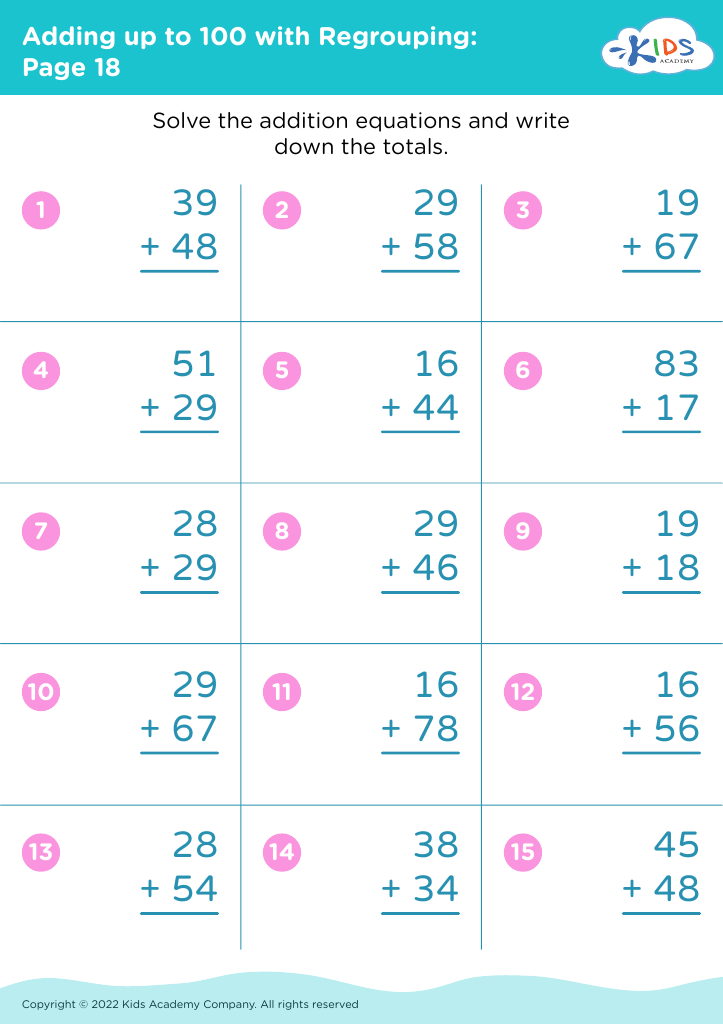Identifying patterns Addition & Subtraction Worksheets for Ages 8-9
3 filtered results
-
From - To
Explore our engaging "Identifying Patterns Addition & Subtraction Worksheets" designed specifically for children ages 8-9. These interactive resources help students recognize numerical patterns and sequences, enhancing their understanding of addition and subtraction concepts. Each worksheet offers a variety of exercises that challenge young learners to analyze relationships between numbers, making math both fun and educational. Through appealing visuals and practical activities, children will improve their critical thinking and problem-solving skills while gaining confidence in their math abilities. Perfect for classroom use or at-home practice, our worksheets provide a comprehensive learning experience to support budding mathematicians on their educational journey!
Identifying patterns in addition and subtraction is crucial for children aged 8-9, as it lays the groundwork for more advanced mathematical concepts and problem-solving skills. At this stage, children begin to deepen their understanding of numbers and operations, and recognizing patterns helps them make connections between related concepts.
For parents and teachers, emphasizing pattern identification encourages cognitive development and enhances critical thinking skills. Patterns can simplify computations, make mental math easier, and foster a sense of numerical fluency. For instance, understanding that adding a specific number in a series or the commutative property (e.g., 4 + 3 is the same as 3 + 4) increases efficiency and confidence in solving math problems.
Moreover, familiarity with patterns not only supports students in math but also nurtures a positive attitude towards the subject. When children can predict outcomes and recognize relationships within numbers, they gain a sense of control and empowerment, making learning less daunting and more enjoyable.
Ultimately, honing pattern recognition in addition and subtraction during this critical age promotes a stronger math foundation that can lead to greater academic success and lifelong skills in logical reasoning and analytical thinking.























